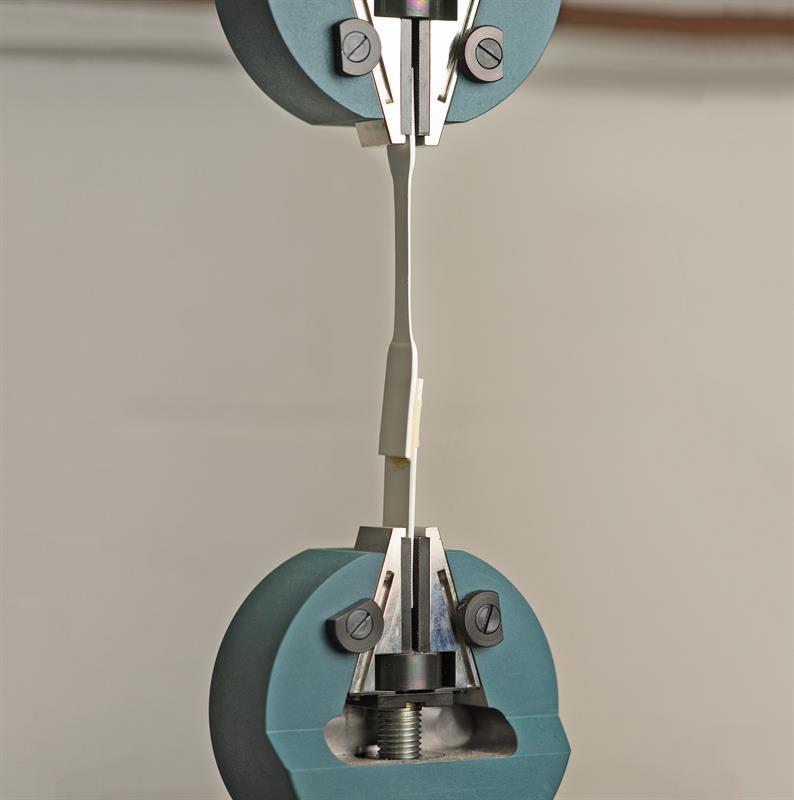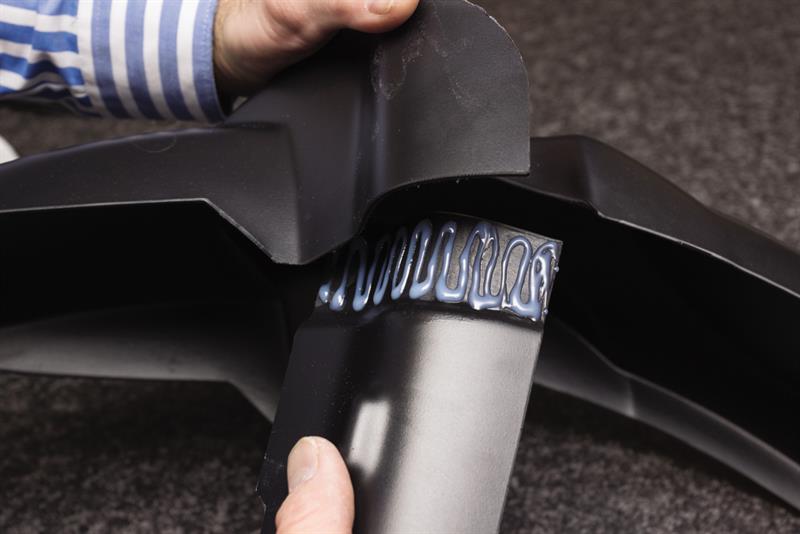Managing director Graham Crozier explains: “We like a challenge and to meet the brief we set to work developing an innovative adhesive technology based on a unique chemistry. The upshot was the development of our PP3000 bonding solution.”
Formulated to specifically bond LSE materials to each other structurally, PP3000 has the ability to bond LSEs to other substrates, plastics, metals, glass and composites. It even bonds to E-coat, ensuring varying materials can be freely combined. The adhesive is a 2-part MMA based, equal mix ratio material, packaged in 50ml and 400ml dual mix cartridges for easy application, which self-mixes the material, so application is of a pre-mixed adhesive.
“Many designers and manufacturers within the manufacturing industry are turning to the use of low surface energy plastics such as thermoplastic polyolefin, TPO, polypropylene, PP and polyethylenes like HDPE, due to the many benefits they have over conventional plastics: low cost, durability, ease of processing and having superior chemical resistance and temperature stability,” says Crozier. “However, these are among the most difficult-to-bond materials, due to their non-polar, ‘wax-like’ surfaces, and can lead to issues when manufacturers need to assemble and join these plastics.”
 When a liquid adhesive is applied to the surface of an LSE plastic, PP, PE, TPO or HDPE, the adhesive beads up, instead of ‘wetting out’ on the surface – much like when it rains just after you have polished your car and the rain beads up on the car body. “This poor wetting out on LSE plastics, where the liquid adhesive will not spread and make intimate contact with the surfaces, results in poor adhesion thus resulting in poor bond strength. Conversely, with a higher surface energy substrate where the surface energy of the adhesive is less than that of the substrate, the adhesive will spread and ‘wet out’ the surfaces, giving the intimate contact required and thus good adhesion.”
When a liquid adhesive is applied to the surface of an LSE plastic, PP, PE, TPO or HDPE, the adhesive beads up, instead of ‘wetting out’ on the surface – much like when it rains just after you have polished your car and the rain beads up on the car body. “This poor wetting out on LSE plastics, where the liquid adhesive will not spread and make intimate contact with the surfaces, results in poor adhesion thus resulting in poor bond strength. Conversely, with a higher surface energy substrate where the surface energy of the adhesive is less than that of the substrate, the adhesive will spread and ‘wet out’ the surfaces, giving the intimate contact required and thus good adhesion.”
The challenge
LSE surfaces would traditionally have to be mechanically attached or solvent welded, as true adhesion could not be achieved. Mechanical attachments such as screws, fixings etc require additional requirements in the moulding process to create features for the fixings to be used and, by using fasteners, potentially creating stress concentration areas where the plastic can fail prematurely, while also resulting in unsightly surfaces.
“In addition to fixings/fasteners, there are several techniques that are used to increase the surface energy of an LSE plastic, making it easier to bond – plasma, corona, flame treatment or solvent-based adhesion promoters. Once these treatments have been applied, it increases the surface energy and allows the liquid adhesive to wet out and give an increased bond level; but rarely to a genuine structural strength.
These additional treatments have a knock-on effect in the increased production cost and production process time, adding cost to the assembly of a component.”
Advanced Adhesive’s PP3000 is already hugely successful in some large-scale applications, with two UK vehicle manufacturers using the adhesive to bond instrument panels, dashboard assemblies, with truly impressive results from their testing. “Testing was carried out alongside four other adhesives, at different temperatures, environmental conditions and environmental cycles,” states Crozier. “PP3000 was the only adhesive that passed the complete test and gave total substrate failure throughout the testing procedure, regardless of the environmental conditions or test procedures where other adhesives failed. PP3000 was tested with plasma-treated components, alongside non-plasma treated components and the PP3000 proved to perform equally as well, proving a structural bond achievement with no need for additional surface treatments.”

Super strength
The PP3000 was also tested for an application for bonding LGF polypropylene against other adhesives and gave substrate failure at the peak temperature requirement of 95°C with a 1mm and 2mm bond line thickness. It also yielded strengths greater than seven times that of the next best adhesive in these tests.
“PP3000 components were then bonded and again tested, but to an increased temperature of 120°C to test for a greater resistance capability of the adhesive and the components,” he says. “Again, the adhesive gave substrate failure, proving the adhesive was stronger than the substrates, even at this increased temperature. The PP3000 is being used very successfully in this automotive application.”
Examples of other successful applications with PP3000 are for bonding motorhome fairings and panels, motorbike fairings, automotive bumper components, bonding of moulded components, bonding of sports equipment etc – even bonding PP baby bath mouldings.
Apart from Advanced Adhesives’ own in-depth trials, extensive testing has been carried out on PP3000 by prospective manufacturers looking to use the adhesive. Along with strength testing, chemical resistance has also been carried out, with proven environmental stability and retained strength resistance to many substances, including petrol, diesel, IPA, motor oil, Xylene, water at 60°C and salt spray conditioning.
“The adhesive strength is tested to ISO 4587, which is an overlap shear test where the substrates are bonded together with a pre-determined overlap, then allowed to cure,” explains Crozier. “After curing, the adhesive bonds are pulled in the shear mode at a constant speed, and the maximum force to failure is recorded. By achieving substrate failure on many components, the adhesive was proved to be stronger than most of the varying test materials themselves, thus delivering genuine structural bond strength on LSE substrates.”
Within the range now, the PP3000 has other adhesives of the same chemistry available to compliment this original material, developed further for specific applications, but all based on the original proven chemistry of the PP3000. Variants include a low viscosity grade, PP3000LV, for applications where a thin bond line is required or for larger surface areas to be bonded together with an ultra-high viscosity version. Also, PP3000UHV for applications where the adhesive needs to be applied to vertical surfaces or to fill a larger gap. Black variants are available, too, for applications where a black bond line is required aesthetically.











